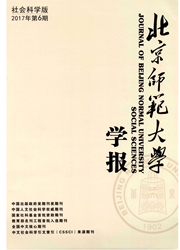

 中文摘要:
中文摘要:
金融集聚体现了金融发展的程度,不仅反映了金融发展的特定阶段,还反映了金融资源的配置状况,但金融集聚对经济增长的影响还有待验证。本文就这一问题,首先运用主成分分析方法对近年来我国各地区金融聚集程度进行评价,然后利用Granger引导关系讨论区域经济增长与金融业聚集程度之间的引导关系,最后利用脉冲响应函数分析了金融业聚集程度对各地区经济增长的影响程度和效果,从而综合评价我国各地区由金融资源配置差异所引起的经济增长差异。结果显示,东部地区由于其拥有的金融资源配置优势,构成其经济增长的Granger引导关系条件,西部地区也呈现一定的显著性。有鉴于此,中西部及东北地区需要更多的金融支持,适当的政策引导和各区域之间协调的金融资源配置对未来经济增长具有重要意义。
 英文摘要:
英文摘要:
Financial agglomeration, as an important manifestation of the degree of financial development, reflects not only the particular stage of financial development, but also the allocation of financial resources. However, its impact on economic growth has yet to be verified. Here we first evaluate China’s regional degree of financial agglomeration by principal component analysis method, and then consider the question of evaluating Granger causal relation between the regional economic growth and the degree of financial agglomeration. Finally, we analyze the extent and effect of the degree of financial agglomeration’s impact on regional economic growth with the impulse response function, and thus comprehensively evaluate economic growth differences caused by differences in the allocation of financial resources. Through the Granger causality test it is found that a unidirectional causal relation exits from financial agglomeration to regional economic development in east and west. We recommend that Midwest and Northeast regions need more financial support and appropriate policy guidance. Rational regional allocation of financial resources is of great significance for future economic growth.
 同期刊论文项目
同期刊论文项目
 同项目期刊论文
同项目期刊论文
 期刊信息
期刊信息
